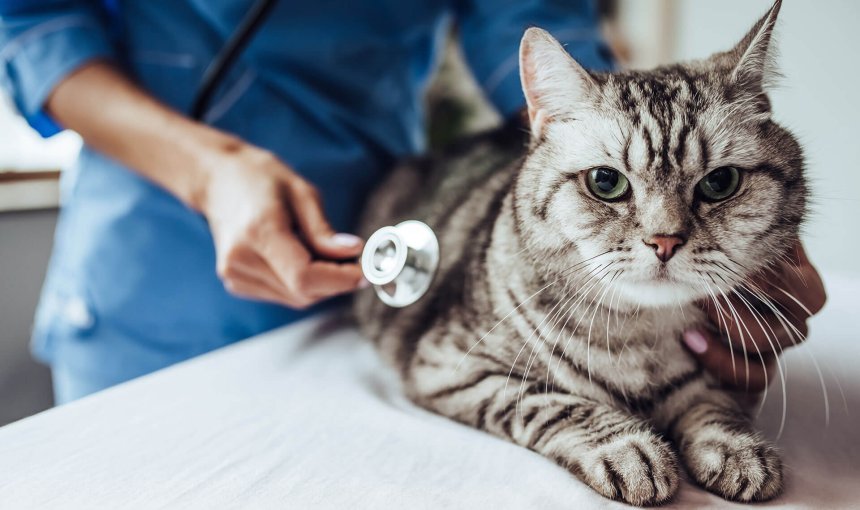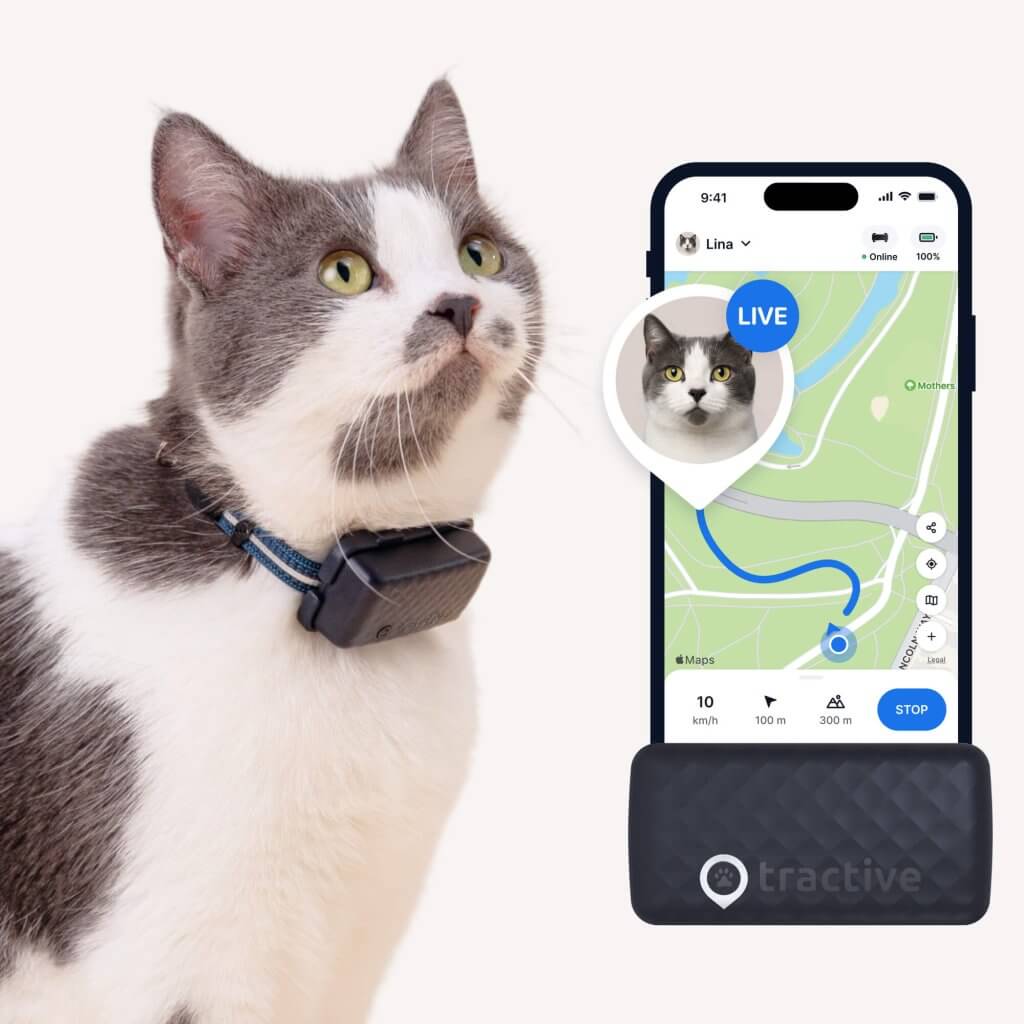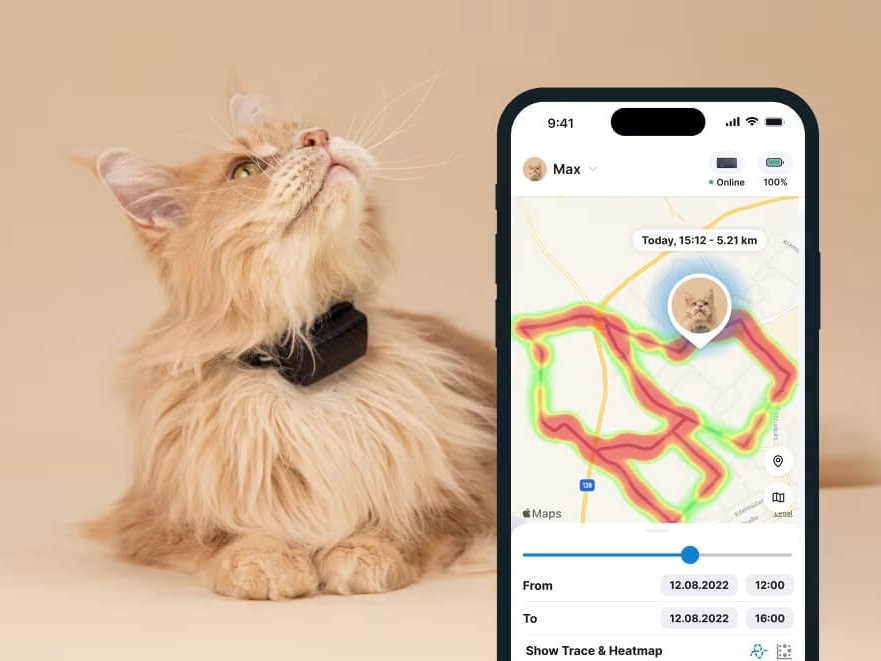 Approved by Dr. Dwight Alleyne, DVM
Approved by Dr. Dwight Alleyne, DVM What Is Toxic To Cats? 5 Household Hazards
You love your cat and want to keep them out of harm's way. But could danger be lurking in your home? Find out what you need to watch out for as a responsible pet parent in this post.

Chances are, your cat feels safe in your home. But as it turns out, a whole bunch of common household items – including food, plants, and even medications – can be dangerous for them. So what is toxic to cats and how can you prevent them from getting their paws into them? We’ll cover all these, including when a cat GPS tracker can be an important safety measure. Let’s get started.

Find out where your cat spends their time.
Read moreWhat is toxic to cats? 5 dangers to watch out for
Here are the top 5 household hazards for cats – most of which are most likely somewhere around your house.
- Poisonous plants
Common plants like lilies, poinsettias and tulips are among the ones you need to watch out for. Read our full guide to plants poisonous to cats. Your cat might also come in contact with poisonous plants in your neighbors’ backyards or elsewhere, if they spend any amount of time outdoors.
“Because lilies are so dangerous for cats and there’s a high risk of death if they’re ingested, it’s best to not bring these plants into your home if you have a cat.
It’s also best if you don’t plant them in your garden if your cat goes outside or if your neighbors have outdoor cats.”
– Pet MD1
- Toxic foods
Including grapes, raisins, chocolate, avocado, onions, or any foods containing artificial sweeteners. - Household chemicals
Including cleaning products, nail polish remover, pesticides, snail bait, weed killers, antifreeze (which actually tastes sweet to cats!), pool chemicals, and paint thinner. Keep chemicals away from your cat and make sure to clean up any spills properly. For safety, keep those items stored away in a cupboard. Also while cleaning, it’s wise to keep your cat in another room until the area is dry and safe again. - Medications
Especially those designed for humans, including aspirin, pain relievers, vitamins and supplements, but also dog flea treatments. - Water with fertilizer in it
Which can harm your cat, if ingested. Your feline might try to take a drink, so always keep watering cans away from cats. Besides, many cats eat grass, so be careful not to let your kitty go roaming if there may be fertilizers or other dangerous chemicals around.
💡A cat GPS tracker can be an important safety measure if you’ve got an outdoor cat – or one that spends any amount of time outdoors. We’ll cover it in detail a little further below.

Track your cat wherever they go
Get real-time location information, wherever they go. Find out when they go somewhere they shouldn’t, with Virtual Fences. And discover their favorite spots with Territory.
Dangerous areas & objects for cats
When it comes to household hazards for cats, be on the look out for toxic plants, foods, medications and chemicals. Besides that, you may also want to consider these commonly overlooked dangers:
- Open windows
When cats discover an open window, they may try to get out. Which could lead to them getting stuck, injured or worse. For safety, use a screen or stay in the room with your cat when the windows open. - Balconies
Balconies can also be danger-zones for cats. Even though cats are known for their great balance, they can still fall and suffer serious injuries. To protect your feline friend, consider cat-proofing your balcony with a safety net. - Ropes and cables
Playing with ropes and cables can be fun entertainment for your cat. But it can also pose a serious risk to your furry friend. Keep cables, ropes, and other dangerous household items out of reach of your feline.
Cat poisoning symptoms
Cat poisoning can come in a variety of forms – your cat may have ingested, inhaled, or touched something toxic. Depending on the substance, symptoms of cat poisoning vary, but here are some of the most common signs:
- Coughing
- Diarrhea
- Vomiting
- Drooling
- Twitching
- Seizure
- Difficulty breathing
- Lethargy
- Cat not eating
- Coma
- Skin inflammation
- Unstable walking
- Shock, collapse
- Drinking (and urinating) more often than usual
- Inability to urinate
- Irregular heartbeat
- Blood in urine/stool
- Bruising
- Nosebleeds
- Jaundice
- Fever
How quickly a cat becomes sick depends on the toxin involved, and the amount ingested. So it’s essential to get your cat to the vet as soon as possible.
What to do if your cat is poisoned
First things first, don’t panic. Call your vet right away. In case you can’t reach your vet, you can visit an emergency veterinary clinic. Or call an animal poison control hotline for help (fees may apply).
Pet Poison Control Help Hotline Resources by Country:
| United States & Canada | Pet Poison Helpline 855-289-0358 ASPCA Animal Poison Control 888-426-4435 |
| United Kingdom | Animal Poison Line 01202 509000 |
| Australia & New Zealand | Animal Poisons Helpline 1300 869 738 (AU) 0800 869 738 (NZ) |
If you know which poison your cat came into contact with, collect a sample of it (or the package/label). This information will be helpful when talking to a vet or helpline.
Don’t induce vomiting in your cat, unless instructed to by a vet. In some cases, vomiting a toxic substance could cause more damage.
Where a cat GPS tracker can be a lifesaver
You might be cat-proofing your kitchen cabinets and backyard – but what about the outdoors? There’s no end to the places your cat might end up licking antifreeze, eating something they really shouldn’t, or running into poisonous plants.
💡That’s where a cat GPS tracker can help you figure out exactly where your cat tends to spend most of their time. So you can check if they’ve been snooping around your neighbors’ lily-riddled backyards, any fertilizer-strewn fields nearby, or any nearby dumpsters.
Just check your cat’s Heat Map & Location History…

…and figure out your cat’s secret “hangout” spots – with just a glance at your phone. With this knowledge, you can prevent your cat from venturing to these areas, warn your neighbors – and take a more active role in your feline buddy’s health, safety, and well-being.
Your furry friend’s health and wellbeing means as much as to us as it does to you. So we’ve made it a priority to only share medically-relevant content on our blog. This post was checked, double-checked, and medically verified by Georgia-based vet, Dr. Dwight Alleyne.

Dr. Dwight Alleyne, DVM
Originally from Long Island, New York, Dr. Alleyne began his career at a no-kill animal shelter before becoming a licensed veterinary technician. He graduated from Cornell University Veterinary College in 2006 and completed an internship at Purdue University. Now practicing in Georgia, Dr. Alleyne specializes in soft tissue surgery and ultrasounds. He also writes pet health articles on his website, “The Animal Doctor Blog” (www.anmldrblog.com).



